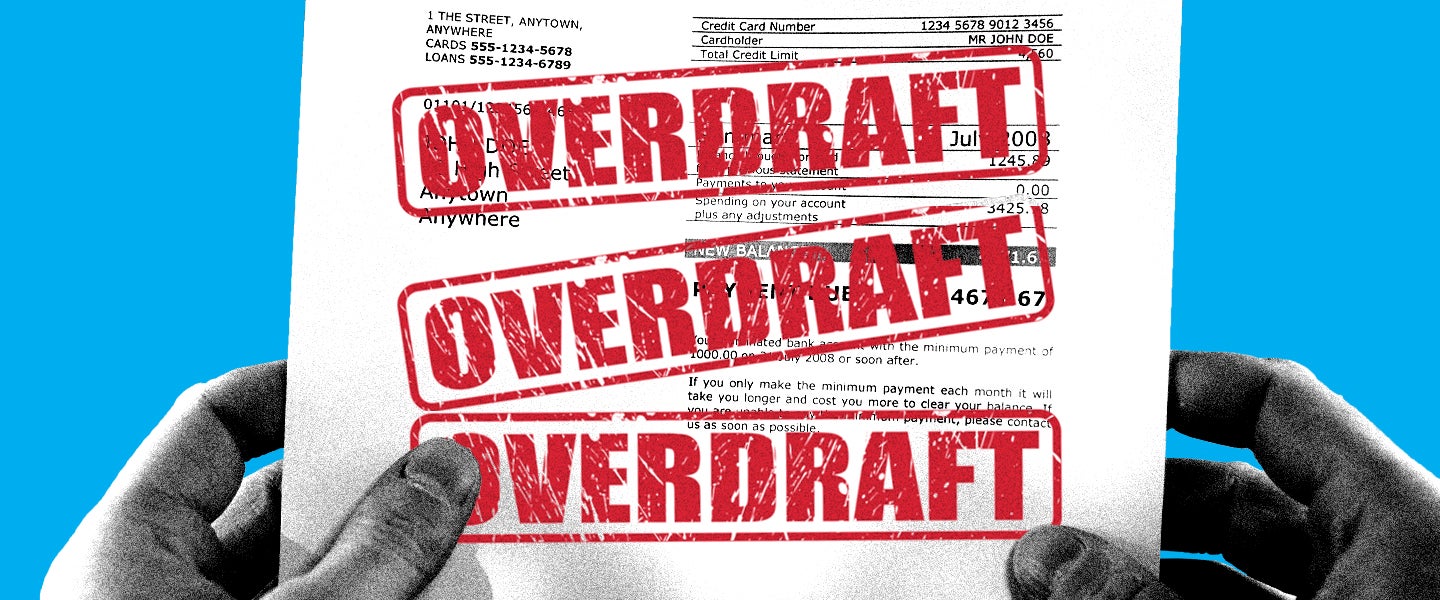Unless you own stock in a bank, you hate overdraft fees. Who doesn’t? They feel punitive for many of us, but for those who truly live a hand-to-mouth existence, they’re the ultimate punish-the-poor tool that traps people in poverty. So, who came up with all of this? How much do banks make from it? Is anything being done about it? Let’s investigate.
Who came up with this “overdraft” idea anyway?
The idea of an overdraft materialized in 1728 in Edinburgh, Scotland — appropriate for a land of people who are commonly stereotyped for being, shall we say, frugal. A local merchant, William Hogg, had the idea of asking for more money than he had in his account. He found that he was often in a cash crunch, in which the money didn’t always come in at the exact moment he needed to make payments. Couldn’t something be done? The Royal Bank of Scotland decided to call it a cash credit, and would loan him additional money in its coffers. It’s a story that the bank today still brags about (there’s an actual company webpage about it) as the overdraft and credit concept helped enable the Industrial Revolution.
That’s cute and all, but who originally began charging customers for overdrafting their own accounts?
Nobody seems to know — probably because, honestly, that’s an innovation that nobody would want to publicly take credit for, right? It’s a piece of trivia forever lost to the sands of time. What we do know is that in the mid-20th century, people wrote checks. If the checks they wrote bounced, the bank would incur a fee, which they’d pass on to the customer (but not before wetting their beaks a little and getting something extra out of it).
By the 1980s, though, more people were using credit cards. Also, crucially, as ATMs proliferated, customers could more easily check their account balance or get money, and the banks lost a significant revenue stream in the bounced check fees. Banks then began charging higher overdraft fees to make up for the shortfall — and then some. Nowadays, customers can overdraft their account many more ways: through debit card transactions, ATM withdrawals, online bill payments or direct debits from lenders.
How many people get charged overdraft fees?
Unless you happen to be the world’s most diligent personal finance expert, we’ve pretty much all been hit with an overdraft fee — which averaged $33.36 in 2019. Basically, if you’re not careful, you can end up with a $35 cup of coffee.
Data shows that a surprisingly disproportionate number of people incur them, though. A 2017 study by the Consumer Financial Protection Bureau showed that 9 percent of account holders incurred 79 percent of the overdraft fees. These frequent overdrafters have really low credit scores, or even none at all, and use their debit cards more frequently. Most crucially, these people also sign up for overdraft protection in greater numbers.
What’s the deal with overdraft protection?
Well, if you need more money than what’s in your account, with overdraft protection, you’ll get it. But you’ll also get a fee, whereas people who don’t opt-in to overdraft coverage will generally have debit card purchases or ATM withdrawals declined with no charge. So overdraft protection ends up being, in a way, like what the mafia likes to call a “juice loan” — it silently and easily enables people to borrow more than they have, only to be hit with a huge charge for it later.
It adds up, too: Those frequently overdrafting people end up paying, on average, $450 more per year than those who don’t have overdraft protection. Our modern banks aren’t nearly as generous as the lending institutions of 18th century Scotland.
Why do overdraft fees disproportionately affect the poor?
Because poor people often need to spend to their last dime — and end up spending more when their account has overdraft protection. After all, when you’re desperate, you’d rather have the transaction go through than not at all, right? Unfortunately, racking up fees can end up burying poor people in extra debt that they can’t get out of when they’re already living on the very edge.
This madness is also inevitably what drives poor people to use payday loan institutions for their banking needs rather than banks, because everything in those places is at least clearly marked.
How much do banks make off of overdraft fees?
In 2017, they made $34 billion off of them. It’s lucrative!
Don’t tell me — the banks do shady shit to increase their overdraft fees too, right?
You bet your ass they do. Some banks will process the debits on your account before the credits, on the off chance that you’ll have overdrafted before everything gets sorted out. But it gets worse — if you make several purchases in a row, banks also will sometimes debit the charges out of chronological order, from most to least expensive, in order to get you to zero faster, and thus nail you with as many overdraft charges as possible (one for each charge).
How the hell is it legal to reorder transactions?
Because there are currently no laws prohibiting it.
What’s being done to stop all of this?
Well, back in 2010, the laws changed, requiring banks to ask their account holders to opt-in to overdraft protection rather than automatically enrolling them in it. Other than that, very little! There are no laws capping overdraft fees. Banks also aren’t required to post deposits before withdrawals. And again, there are no laws prohibiting reordering transactions.
Until consumers rise up and demand changes, exactly nothing will change. In an ideal world, we’d all keep a closer eye on our account balance — and many banks offer account alerts like this. But this godforsaken world is anything but ideal these days, so for now, it’s caveat fucking emptor, pal.

